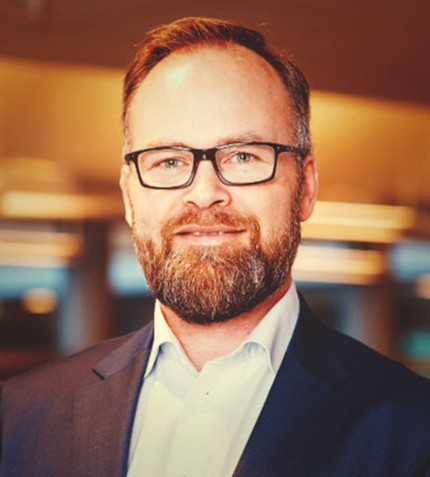
"In 2019, we did our first core drilling and struck a bonanza-grade gold deposit unlike anything else seen before. Upon the discovery, I dedicated myself 100% to building the company."
Jørgen Evjen
CEO, AKOBO MINERALS
Could you introduce Akobo Minerals to our audience?
About 12 years ago, we started then-called Abyssinia Resources Development, a Norwegian-Ethiopian JV company, with a view to starting a small gold operation in the vicinity of the Akobo River in Ethiopia. Close to the South Sudanese border, this extremely remote area was never mined before and lacked all basic infrastructure. Setting up the logistics and getting in supplies was incredibly difficult, but we carried on with trenching, soil sampling, and RC drilling to build our geological model. In 2019, we did our first core drilling and struck a bonanza-grade gold deposit unlike anything else seen before. Upon the discovery, I dedicated myself 100% to building the company.
Can you familiarize our audience with the two deposits and your strategy for developing these?
Within the 182 km2 exploration landholding, the mining license covers the Segele discovery stretching over 16 km2. Segele is the first discovery made and an outstandingly rich deposit: It is a petite mine of incredibly high grades with an average of 22.7 g/t Au in the Resource estimate, and 40.6 g/t in Indicated resources. The deposit is open at depth, and we are confident to find similar shoots around it. The second area is called Joru and has a very different geology, with more of a traditional lower-grade mineralization but with the potential for larger volumes. Segele gives us the opportunity to move into production quickly, while we inject cash into developing Joru and other targets. With all technical studies completed and the mining license received, Segele is on track to start production at the beginning of 2023. The cash generated at Segele will help us fund ongoing exploration for many years ahead.
What is the capital you require to bring Segele into production?
According to our scoping study, we were looking at a CAPEX of approximately US$10 million to get the mine up and running, way below the standard capital requirement of most development projects. We estimate that Segele will generate US$50 million of free cash flow over the next two years.
What is it like to be an explorer in Ethiopia?
The beauty of the country immediately strikes everyone that visits Ethiopia. Infrastructure developments have been significant over the last 10 years – today, our site benefits from tarmac roads that take us to the border of South Sudan from Addis in about two days, as well as fiber internet and mobile coverage. The country has immense hydropower potential with the Renaissance dam, though right now grid stability is a problem.
Without a history of colonization, Ethiopia is very different from other African countries, and it has built a solid bureaucracy over the years. PM Abiy Ahmed has an ambitious and modern vision for the country; he has already liberalized the telecom sector and is now opening banking. Despite all the country has to offer, it has not managed to put itself on the map of international investors. One of the biggest limitations for foreign investors is around expatriating investment dollars. Akobo Minerals signed the first mining agreement to ever give a mining company the rights to expatriate profits. By becoming the first new gold producing company in the last 20 years, we will pave the way for other players.
Akobo Minerals was recognized at Mines and Money for one of the best ESG programs. Can you tell us what this consists of?
As a proud Scandinavian company, we apply the highest standards and ethics. In Ethiopia, we have the chance to do things right from the beginning. With gold everywhere around our site, there have been up to 20,000 alluvial artisanal miners whose presence has completely altered the biodiversity of this tropical, green area. Our focus is to create long-term gains independent of mining; it is too often the case that once a mining company leaves a town, the community collapses. We are creating a tree nursery to restore natural ecosystems where locals can become self-sustaining and gain an income. With biodiversity slowly re-established, we hope to see the return of big animals like lions, elephants, and rhinos. When we become a producer, our long-term vision is to become carbon-neutral and produce green gold through use of carbon credits.











